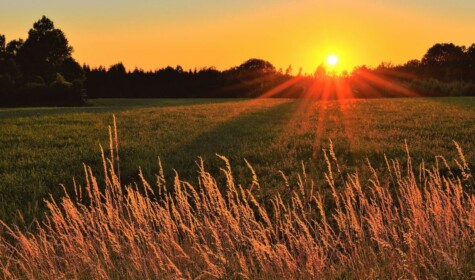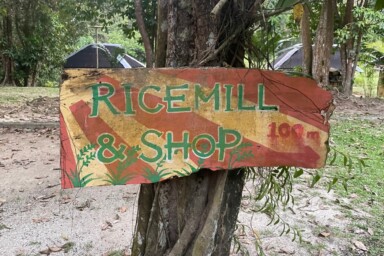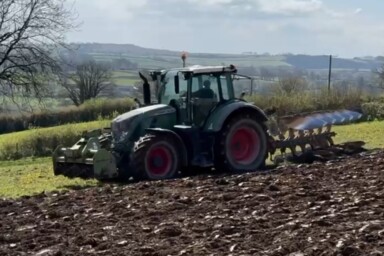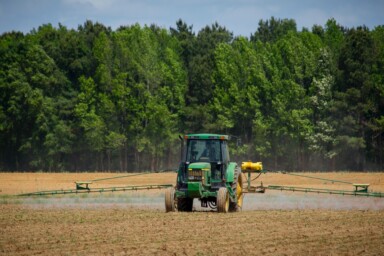Most agriculture takes place on private land. This presents a perennial tension between widely held virtues of individual freedom and the urgent public concerns over how to produce food in a way that fosters health and planet. Yet in questions over how to make the food system more sustainable, the antagonism between ownership rights and food system sustainability is rarely addressed head on. The focus of food system ‘solutions’ preference agricultural technologies, newfangled farming practices and ‘nudge strategies’ to shift consumer diets, rather than debating how arable land should be controlled, accessed, traded and distributed. Because the vast majority of the food system is governed by the rules and norms of private property, we end up asking the wrong questions about sustainable food. Instead of asking what innovative farm business models can overcome the current constraints of the land market, perhaps we should be asking what creative land relations can support the farming practices we require, to avoid ecological and climate breakdown?
Our relationship with land
Land is making its way back onto the agenda: a collection of scholars and environmental organisations frustrated with the incremental progress of food system reform now conclude that if the desired goal is changing the food system, we may have to tweak the way we govern the core of what it means to own land.
Our dominant relationship to land is mediated through a wholly peculiar property system. The owners of food system assets like land, supply and retail businesses and intellectual property are strongly incentivised to make decisions, first as owners of lucrative assets and second as managers of a complex, multi-layered socio-ecological system. The adage describing farmers as ‘cash poor but land rich’ is a well-known truism to acknowledge the fiscal constraints that farmers face. But the overlooked conclusion of the saying is that many farms are managed primarily in pursuit of a speculative future sale, rather than as an ongoing labour of food production.
Owners of farms, restaurants or distribution companies, have the power to make private decisions that have very public ramifications. Invoking the rights guaranteed by ownership, an individual landlord can evict an agroecological tenant, procure ingredients embedded in exploitative or polluting supply chains, sell prime habitat to developers or use pesticides that make their way into drinking water.
As pollinator and insect biodiversity continues to decline, scientists encourage large landscape level changes to how we grow food and how to limit harmful pesticides. When pollinators migrate freely across a landscape, from a property perspective they are travelling across a network of individual land holdings, each with strong rights to manage the land as they see fit. An individual landowner has no obligations to maintaining pollinator habitat or to reduce pesticide use. Even if they sign on to voluntary action to plant hedgerows or limit spraying, their power to make changes stops at that parcel boundary. Environmental regulation can, of course, limit and direct some private decisions. But the teeth of environmental regulation are consistently dulled by the assertion of individual liberty at the expense of common interest. And thus, while our system of land ownership individualises responsibility and the capacity to influence habitats, the pollinators, who make decisions at the landscape level, suffer the consequences.
A tenant farmer may have all of the skills to produce sustainable food, but is nonetheless burdened by the need to maintain their right to access, granted by the legal owner’s land. For many small-scale tenants, the price of agricultural land is prohibitive and restrictive, when seeking to farm sustainably under high speculative rents.
Owning land
For a select few, the security granted by land ownership enables farmers to experiment with sustainable food models that can only be brought about through long-term planning. Yet the logic of property encourages unhealthy competition among farm entrepreneurs, a resistance to adequate environmental legislation and ballooning land markets that make it difficult for new ecological farmers to enter the sector. Even when new entrants do find land against all odds, expensive rents make it difficult to remain solvent, and a struggle to pursue their sustainable food vision. For the vast majority, then, the very benefits of making it into that class of farmland owners acts as a bottleneck, limiting the number and diversity of farmers who are needed to bring about a new, more agroecological food system. Despite this, the status quo of rights to property are enshrined in layers of legal protection.
The story of property, the one told by English thinkers like John Locke and William Blackstone, was that a civilized society needed strong property rights in order to further economic activity, reduce competition amongst resources and avoid conflict. Later, thinkers like Friedrich Hayek saw strong property entitlements as the progenitor of liberty and the key to keeping individuals safe from an authoritarian state. Property laws followed to prop-up these ideals of select economic activity and preferred types of land use. Today, laws about property may feel ‘natural’ or common sense, but these early thinkers dreamed up this system from thin air, making real a fiction that matched their values for society.
Unwinding such a relationship and reforming the laws that govern property and ownership is a daunting task. Fortunately, a slew of emerging agricultural land trusts and commoning efforts aim to take land out of the market for the sole purpose of supporting regenerative or agroecological farming. Freed from the burden of property, these efforts emerging from within nations with strong property commitments demonstrate a style of sustainable food intervention that focuses on land governance first and sustainable practices second. These initiatives demonstrate an awareness that promoting agroecology on private land may ultimately fall to the capitalising and consolidating incentives of the property market and thus a need to intervene on the logic of who controls the land before a new farming model can be installed. The land reform agenda in Scotland shows a somewhat unique willingness of a government, whose usual role is to uphold and defend the right to own land, to tweak the rule of how land is sold, transferred and maintained as a means to the end of sustainable development and community well-being.
Changing the nature of ownership
While I see promise in creative legal tools to unwind the faulty logics at the core of property’s narrative, unravelling the sacrosanctity of property in our own minds is the much more daunting task. Reimagining what it means to own farmland, in law and in practice, is certainly an important dynamic to follow. Yet, I worry we’ve only just begun to think about a much deeper question of how norms of property in many industrialised countries are embedded in bedrock cultural values and virtues.
Perhaps the first step is to recognise that legal mechanisms are always propped up by a story of justification. The story of property is one that says we need a system of strong clear property rights to deliver economic growth for all, to reduce competition of resources and to promote liberty. To reimagine alternative legal entitlements to land, we might start with the simple observation that our rules of property aren’t delivering on any of the above.
A different story of property might point out how the rules of ownership tend to lead to perverse economic inequality, increasingly perilous resource conflicts and a tyranny of the landlords versus the landless. If it is stories that are needed, the key to alternatives to the ownership model of property may be found not in creative legal argumentation, but in creative writing, in appeals to morals, in the arts, in fiction.
The strong ownership model of property that has come to dominate much of the world may be a quintessentially English phenomenon. It was English scholars and thinkers who justified the enclosures in the British Isles and the murderous frontier expansion in the Americas through articulations of ‘enlightened’ forms of property. Perhaps a parallel search for dormant yet powerful alternative values about land and home can provide a starting point to reforming property not just in the law, but in the heart as well. Food systems sustainability requires a model of property that facilitates a paradigm shift in how we access land, grow food and distribute healthy nutrients. It’s time to tell stories about ownership that meet this demand.






